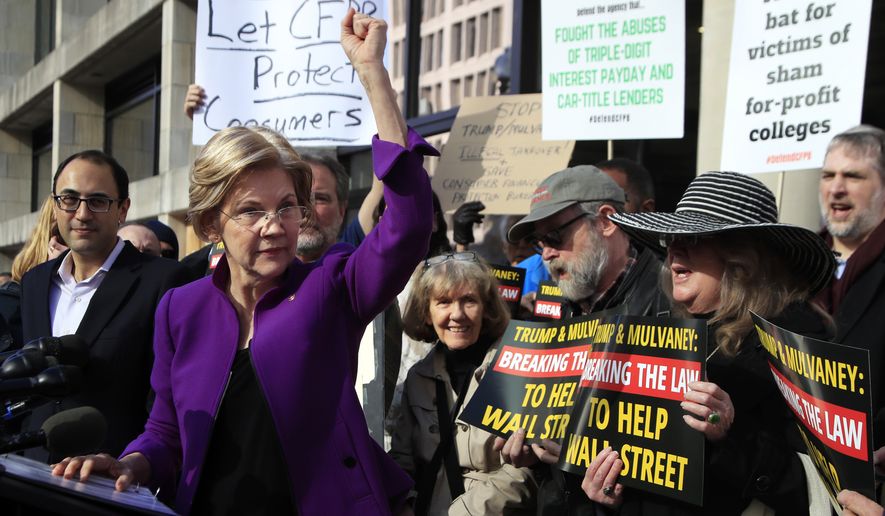The Obama-era Consumer Financial Protection Bureau faced a legal challenge at the Supreme Court on Thursday to its singe-director format, a setup that Supreme Court nominee Brett M. Kavanaugh has consistently ruled against for placing too much power in the hands of one unaccountable bureaucrat.
State National Bank of Big Spring, Texas, along with the nonprofit Competitive Enterprise Institute and the seniors’ advocacy group 60 Plus Association, filed a petition with the high court to hear a lawsuit that seeks to declare the CFPB’s organizational structure unconstitutional. The agency was created in 2010 as part of the Dodd-Frank financial regulatory law.
“Dodd-Frank gave unelected bureaucrats czar-like power over America’s financial system, and the bureau has used that power to inflict damage on businesses and consumers alike,” said CEI General Counsel Sam Kazman. “The Supreme Court should intervene to restore the Constitution’s checks and balances on this unrestrained government power and to make it clear that Congress cannot abdicate its power of the purse.”
Republicans have often criticized the CFPB as an unaccountable regulator run amok. President Trump has curtailed the agency’s impact, installing Office of Management and Budget Director Mick Mulvaney, a fiscal conservative, as the interim head after the departure of activist director Richard Cordray in late 2017.
Judge Kavanaugh, while serving on the Court of Appeals for the District of Columbia Circuit, has ruled that the structure of the consumer watchdog is unconstitutional. In an October 2016 ruling, he said the CFPB director had more power than any government official besides the president, who can only remove the director for cause.
Senators have raised the subject at Judge Kavanaugh’s confirmation hearing this week. The nominee agreed with Sen. Ben Sasse, Nebraska Republican, that the CFPB’s current makeup essentially has resulted in a “fourth branch of government.”
Still, he said he hasn’t ruled that the agency be dismantled, as some conservatives have urged.
“I did not say that the agency was invalid, or could not continue to pursue its important regulatory functions for consumer protection,” Judge Kavanaugh said. “Rather, I said simply that the single director head of it had to be removable at will, not for cause.”
The petition from CEI notes that the bureau has a single director that the president cannot remove from office for policy reasons, that Congress has no control over or oversight of CFPB funding, and that the bureau lacks internal checks or balances of a multimember commission.
Congress established the CFPB as part of the Dodd-Frank financial regulatory law in 2010 to protect consumers from predatory lending practices. But rather than operate as a five-member commission, the CFPB has a single director who ultimately decides on penalties including multi-million-dollar fines against some companies.
The lawsuit involving Big Spring bank was originally filed in 2012, and challenged the constitutionality of several major provisions of the Dodd-Frank Wall Street Reform and Consumer Protection Act, including the CFPB. In 2015, the Circuit Court of Appeals for the District of Columbia affirmed that CEI, 60 Plus Association, and the bank had standing to challenge the constitutionality of the CFPB and Mr. Obama’s 2012 recess appointment of Mr. Cordray.
The appeals court sent the case back to the district court for a ruling on the merits of the case, and also upheld the lower court’s ruling that 11 states lacked standing to challenge other Dodd-Frank provisions.
The case was put on hold pending the D.C. Circuit’s consideration of another court case, PHH Corp. v. CFPB, in which the full circuit court eventually overturned Judge Kavanaugh’s panel’s decision and upheld the bureau’s single-director structure.
Since then, the district court in the Big Spring case ruled against the plaintiffs, a decision upheld by the D.C. Circuit Court in June.
• Dave Boyer can be reached at dboyer@washingtontimes.com.




Please read our comment policy before commenting.